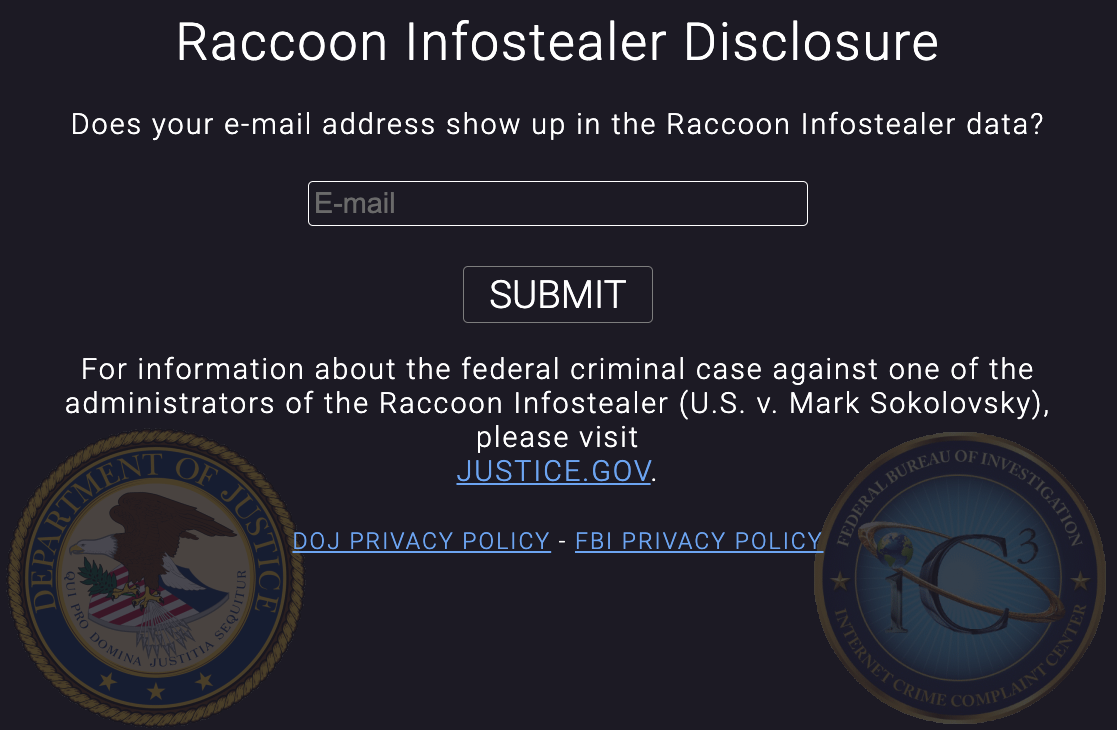
Every few months, an important ceremony takes place. It’s not splashed all over the news, and it’s not attended by global dignitaries. It goes unnoticed by many, but its effects are felt across the globe. This ceremony helps make the internet more secure for billions of people.
This unique ceremony began in 2010 when Verisign, the Internet Corporation for Assigned Names and Numbers (ICANN), and the U.S. Department of Commerce’s National Telecommunications and Information Administration collaborated – with input from the global internet community – to deploy a technology called Domain Name System Security Extensions (DNSSEC) to the Domain Name System (DNS) root zone in a special ceremony. This wasn’t a one-off occurrence in the history of the DNS, though. Instead, these organizations developed a set of processes, procedures, and schedules that would be repeated for years to come. Today, these recurring ceremonies help ensure that the root zone is properly signed, and as a result, the DNS remains secure, stable, and resilient.
In this blog, we take the opportunity to explain these ceremonies in greater detail and describe the critical role that Verisign is honored to perform.
DNSSEC is a series of technical specifications that allow operators to build greater security into the DNS. Because the DNS was not initially designed as a secure system, DNSSEC represented an essential leap forward in securing DNS communications. Deploying DNSSEC allows operators to better protect their users, and it helps to prevent common threats such as “man-in-the-middle” attacks. DNSSEC works by using public key cryptography, which allows zone operators to cryptographically sign their zones. This allows anyone communicating with and validating a signed zone to know that their exchanges are genuine.
The root zone, like most signed zones, uses separate keys for zone signing and for key signing. The Key Signing Key (KSK) is separate from the Zone Signing Key (ZSK). However, unlike most zones, the root zone’s KSK and ZSK are operated by different organizations; ICANN serves as the KSK operator and Verisign as the ZSK operator. These separate roles for DNSSEC align naturally with ICANN as the Root Zone Manager and Verisign as the Root Zone Maintainer.
In practice, the KSK/ZSK split means that the KSK only signs the DNSSEC keys, and the ZSK signs all the other records in the zone. Signing with the KSK happens infrequently – only when the keys change. However, signing with the ZSK happens much more frequently – whenever any of the zone’s other data changes.
Something to keep in mind before we go further: remember that DNSSEC utilizes public key cryptography, in which keys have both a private and public component. The private component is used to generate signatures and must be guarded closely. The public component is used to verify signatures and can be shared openly. Good cryptographic hygiene says that these keys should be changed (or “rolled”) periodically.
In DNSSEC, changing a KSK is generally difficult, whereas changing a ZSK is relatively easy. This is especially true for the root zone where a KSK rollover requires all validating recursive name servers to update their copy of the trust anchor. Whereas the first and only KSK rollover to date happened after a period of eight years, ZSK rollovers take place every three months. Not coincidentally, this is also how often root zone key signing ceremonies take place.
The notion of holding a “ceremony” for such an esoteric technical function may seem strange, but this ceremony is very different from what most people are used to. Our common understanding of the word “ceremony” brings to mind an event with speeches and formal attire. But in this case, the meaning refers simply to the formality and ritual aspects of the event.
There are two main reasons for holding key signing ceremonies. One is to bring participants together so that everyone may transparently witness the process. Ceremony participants include ICANN staff, Verisign staff, Trusted Community Representatives (TCRs), and external auditors, plus guests on occasion.
The other important reason, of course, is to generate DNSSEC signatures. Occasionally other activities take place as well, such as generating new keys, retiring equipment, and changing TCRs. In this post, we’ll focus only on the signature generation procedures.
A month or two before each ceremony, Verisign generates a file called the Key Signing Request (KSR). This is an XML document which includes the set of public key records (both KSK and ZSK) to be signed and then used during the next calendar quarter. The KSR is securely transmitted from Verisign to the Internet Assigned Numbers Authority (IANA), which is a function of ICANN that performs root zone management. IANA securely stores the KSR until it is needed for the upcoming key signing ceremony.
Each quarter is divided into nine 10-day “slots” (for some quarters, the last slot is extended by a day or two) and the XML file contains nine key “bundles” to be signed. Each bundle, or slot, has a signature inception and expiration timestamp, such that they overlap by at least five days. The first and last slots in each quarter are used to perform ZSK rollovers. During these slots we publish two ZSKs and one KSK in the root zone.
The root zone KSK private component is held inside secure Hardware Security Modules (HSMs). These HSMs are stored inside locked safes, which in turn are kept inside locked rooms. At a key signing ceremony, the HSMs are taken out of their safes and activated for use. This all occurs according to a pre-defined script with many detailed steps, as shown in the figure below.

Also stored inside the safe is a laptop computer, its operating system on non-writable media (i.e., DVD), and a set of credentials for the TCRs, stored on smart cards and locked inside individual safe deposit boxes. Once all the necessary items are removed from the safes, the equipment can be turned on and activated.
The laptop computer is booted from its operating system DVD and the HSM is connected via Ethernet for data transfer and serial port for console logging. The TCR credentials are used to activate the HSM. Once activated, a USB thumb drive containing the KSR file is connected to the laptop and the signing program is started.
The signing program reads the KSR, validates it, and then displays information about the keys about to be signed. This includes the signature inception and expiration timestamps, and the ZSK key tag values.
Validate and Process KSR /media/KSR/KSK46/ksr-root-2022-q4-0.xml...
# Inception Expiration ZSK Tags KSK Tag(CKA_LABEL)
1 2022-10-01T00:00:00 2022-10-22T00:00:00 18733,20826
2 2022-10-11T00:00:00 2022-11-01T00:00:00 18733
3 2022-10-21T00:00:00 2022-11-11T00:00:00 18733
4 2022-10-31T00:00:00 2022-11-21T00:00:00 18733
5 2022-11-10T00:00:00 2022-12-01T00:00:00 18733
6 2022-11-20T00:00:00 2022-12-11T00:00:00 18733
7 2022-11-30T00:00:00 2022-12-21T00:00:00 18733
8 2022-12-10T00:00:00 2022-12-31T00:00:00 18733
9 2022-12-20T00:00:00 2023-01-10T00:00:00 00951,18733
...PASSED.
It also displays an SHA256 hash of the KSR file and a corresponding “PGP (Pretty Good Privacy) Word List.” The PGP Word List is a convenient and efficient way of verbally expressing hexadecimal values:
SHA256 hash of KSR:
ADCE9749F3DE4057AB680F2719B24A32B077DACA0F213AD2FB8223D5E8E7CDEC
>> ringbolt sardonic preshrunk dinosaur upset telephone crackdown Eskimo rhythm gravity artist celebrate bedlamp pioneer dogsled component ruffled inception surmount revenue artist Camelot cleanup sensation watchword Istanbul blowtorch specialist trauma truncated spindle unicorn <<
At this point, a Verisign representative comes forward to verify the KSR. The following actions then take place:
The signing program outputs a new XML document, called the Signed Key Response (SKR). This document contains signatures over the DNSKEY resource record sets in each of the nine slots. The SKR is saved to a USB thumb drive and given to a member of the Root Zone KSK Operations Security team. Usually sometime the next day, IANA securely transmits the SKR back to Verisign. Following several automatic and manual verification steps, the signature data is imported into Verisign’s root zone management system for use at the appropriate times in the next calendar quarter.
Keeping the internet’s DNS secure, stable, and resilient is a crucial aspect of Verisign’s role as the Root Zone Maintainer. We are honored to participate in the key signing ceremonies with ICANN and the TCRs and do our part to help the DNS operate as it should.
For more information on root key signing ceremonies, visit the IANA website. Visitors can watch video recordings of previous ceremonies and even sign up to witness the next ceremony live. It’s a great resource, and a unique opportunity to take part in a process that helps keep the internet safe for all.
The post Verisign’s Role in Securing the DNS Through Key Signing Ceremonies appeared first on Verisign Blog.
“Where do we start?”
This is the question every CISO asks about every new program. In fact, I ask and answer that question many times a month. There’s a reason for this, of course. A strong start to any project builds momentum, reassures stakeholders, and sets the stage for what’s to come. Security resilience initiatives are no different. Security resilience is the ability to anticipate and respond to unpredictable threats or changes, and then emerge stronger. It’s hard to imagine a more vital undertaking for CISOs. And as with all initiatives, CISOs always want to know where to begin.
They’re likely to find some valuable starting points in the Security Outcomes Report, Volume 3: Achieving Security Resilience, the latest in a series of reports released by Cisco and reflecting the viewpoints of 4,700 IT and security professionals from 26 countries. The report identifies seven success factors CISOs can pursue to improve outcomes within their own enterprise security resilience programs, placing a high priority on security resilience. The seven success factors range in nature from the architectural—simplifying your hybrid IT environment, maximizing zero trust adoption—to more relationship-focused factors.
It’s the latter that caught my eye.
Seven success factors for resilience:
It shouldn’t surprise any CISO that the first two success factors are built around relationships. These factors zero in on relationships with company leadership (as measured by establishing executive support) and relationships with people across the organization (as measured by cultivating a culture of security). Experienced CISOs know that these factors can make or break security initiatives.
Given the objective of security resilience is to withstand threats and come back even stronger, it’s clear that resilience must exist before, during, and after a cybersecurity incident. This has repercussions on the executive level and throughout the business. Lack of executive support can lead to detection, response, and recovery capabilities that are chronically underfunded. This leaves CISOs at a disadvantage when security incidents do inevitably happen and panic strikes the C-suite. What’s more, CISOs who lack strong executive relationships may also find themselves struggling to oversee incident management and coordinate communications. And afterward? Remediating and improving the security posture, which often impacts multiple parts of the organization beyond IT and often requires significant investment, stalls without a necessary lift from leadership.
The security report, which scores resilience levels across a series of criteria, finds that organizations reporting a strong backing from leadership have resilience scores that are 39% higher when compared to organizations reporting weak support. “Bridges to the C-suite are built upon a solid understanding of how the business works and how security initiatives can make it work even better,” notes the report. “Support goes both ways in any relationship, after all.”

In addition to keeping the program aligned, CISOs must keep in communication with their peers and superiors. Those who share only transactional relationships within the C-Suite find their interactions limited to status updates and budget requests. Transformational relationships, however, involve more frequent and deeper communication and interactions, which cover a broader set of topics than submitting the latest budget ask. They are, in other words, more valuable.
Of course, executive support is just one crucial factor for success. Resilience programs need broad support from throughout the organization, not just at the top. Every time an employee picks up a mouse or accesses an app from their mobile phone, they make a choice to either strengthen or lessen the organization’s security posture. Every time an improvement is necessary following a security event, cultural buy-in determines whether this new request from security is implemented or circumvented.
According to the report, organizations that successfully foster a culture of security can see a 46% increase in resilience compared to those who lack such a culture. Much like aligning a program with the business direction furthers leadership buy-in, CISOs need to align security policy with the functional direction of the business—but in a way that helps employees see security measures as protecting not just corporate data and IT assets but also their own future. When employees aren’t on board or see security measures as IT concerns with no relation to them, resilience suffers. “Frequent security policy violations and workarounds,” notes the report, “are evidence of poor security culture.” By viewing policy exceptions as feedback, and investigating these from the perspective of identifying and correcting misalignment, security leaders can enroll employees as the willing participants in the solution—rather than contributors to the problem.
Security leaders know, by and large, what we need to do to secure our organizations. We have frameworks with pages of controls. We have risk registers with lists of action items. Where we often struggle is translating this knowledge into action. To do that, we must see our efforts within the strategic context of executive leaders and the tactical reality of the line managers in our organization. We must personalize and prioritize our efforts around what matters to the people we collaborate with. It is through engaging people that our security programs become human-centric and, in turn, become more resilient.
Where do we start? With relationships. Good relationships lead to good security programs, and good security programs lead to great relationships. And all of these contribute to security resilience.
Download the Security Outcomes Report, Vol. 3: Achieving Security Resilience today.
Explore more original research and blogs like this:
We’d love to hear what you think. Ask a Question, Comment Below, and Stay Connected with Cisco Secure on social!
Cisco Secure Social Channels



Speaking to many CISOs, it’s clear that many security executives view zero trust as a journey that can be difficult to start, and one that even makes identifying successful outcomes a challenge. Simultaneously, the topic of security resilience has risen up the C-level agenda and is now another focus for security teams. So, are these complementary? Or will they present conflicting demands that will disrupt rather than assist the CISO in their role?
One of the most striking results coming from Cisco’s latest Security Outcomes Report is that organizations with a mature zero trust implementation – those with basic controls, constant validation and automated workflows – experience a 30% improvement in security resilience compared to those who have not started their zero trust journey. So, these two initiatives – implementing zero trust and working to achieve security resilience – appear to complement each other while supporting the CISO when a cyber black swan swims in.
Security resilience is the ability to withstand an incident and recover more strongly. In other words, ride out the storm and come back better. Meanwhile, zero trust is best known as a “never trust, always verify” principle. The idea is to check before you provide access, and authenticate identity based on a risk profile of assets and users. This starts to explain why the two are complementary.
The Security Outcomes Report summarizes the results of a survey of more than 4,700 security professionals. Among the insights that emerge are nine security resilience outcomes they consider most important. The top three outcomes for resilience are prevention, mitigation and adaptation. In other words, they prioritize first the ability to avoid an incident by having the right controls in place, then the ability to reduce and reverse the overall impact when an incident occurs, and then the ability to pivot rapidly without being bound by too rigid a set of systems. Zero trust will support these outcomes.
Preventing, or reducing the likelihood of a cybersecurity incident, is an obvious first step and no surprise as the most important outcome. Pursuing programs that identify users and monitor the health of devices is a crucial a preventative step. In fact, simply ensuring that multifactor authentication (MFA) is ubiquitous across the organization can bring an 11% improvement in security resilience.
When incidents occur, security teams will need a clear picture of the incident they are having to manage. This will help in them respond quickly, with a proactive determination of recovery requirements. Previous studies show that once a team achieves 80% coverage of critical systems, the ability to maintain continuity increases measurably. This knowledge will also help teams develop more focused incident response processes. A mature zero trust environment has also been found to almost double a team’s ability to streamline these processes when compared to a limited zero trust implementation.
When talking to CISOs about successful implementation programs, communication within the business emerges as a recurring theme. Security teams must inform and guide users through the phases of zero trust implementation, while emphasizing the benefits to them. When users are aware of their responsibility to keep the organization secure, they take a participatory role in an important aspect of the business. So, when an incident occurs, they can support the company’s response. This increases resilience. Research has shown that a mature program will more than double the effect of efforts to improve the security culture. Additionally, the same communication channels established to spread the word of zero trust now can be called upon when an incident requires immediate action.
Mature implementations have also been seen to help increase cost effectiveness and reduce unplanned work. This releases more resource to cope with the unexpected – another important driver of resilience surfaced in Volume 3 of the Security Outcomes Report. Having more efficient resources enables the security function to reallocate teams when needed. Reviewing and updating resource processes and procedures, along with all other important processes, is a vital part of any of any change initiative. Mature zero trust environments reflect this commitment continuous assessment and improvement.
Inherent in organizational resilience is the ability to adapt and innovate. The corporate landscape is littered with examples of those who failed to do those two things. A zero trust environment enables organizations to lower their risk of incidents while adapting their security posture to fit the ongoing changes of the business. Think of developing new partners, supporting new products remotely, securing a changing supply chain. The basic tenets of MFA – including continuous validation, segmentation and automation – sets a foundation that accommodates those changes without compromising security. The view that security makes change difficult is becoming obsolete. With zero trust and other keys to achieving security resilience, security now is a partner in business change. And for those CISOs who fear even starting this journey, understanding the benefits should help them take that first step.
Download the Security Outcomes Report, Vol. 3: Achieving Security Resilience today.
Learn more about cybersecurity research and security resilience:
We’d love to hear what you think. Ask a Question, Comment Below, and Stay Connected with Cisco Secure on social!
Cisco Secure Social Channels

Pledging to follow healthier habits is consistently the most popular new year’s resolution. That January 1st promise looks different to everyone: snacking less often, going to the gym more often, drinking more water, drinking less soda, etc. This year, instead of a juice cleanse subscription, opt for a healthier habit that’s not an unappetizing shade of green: follow this digital detox, instead! In three easy steps, you can make great strides in improving your digital wellness.
There are various aspects of your digital habits that you should consider updating for a more private and safer online life. For starters, update your passwords. Do you reuse the same password for multiple online accounts? Doing so puts your personally identifiable information (PII) at great risk. For example, if a business with which you have an online shopping account is breached by a cybercriminal, your login and password combination could make it on the dark web, through no fault of your own. Then, through a brute force attack, a criminal could use that same password and username combo to walk into your banking or tax filing accounts.
Remembering unique, complicated passwords and passphrases for your dozens of online accounts would be impossible. Luckily, there’s software that remembers them for you! It’s called a password manager, which acts as a vault for all your login information. Just remember one master password, and you can be confident in the security of your accounts and never have to deal with the hassle of forgetting passwords.
Another aspect of updating you should adopt in 2023 is making an effort to always upgrade to the latest software updates on all your devices. The easiest way to do this is to turn on automatic updates. From there, you don’t need to take any further action! Apps and operating systems (like Apple, Android, and Windows) often release updates to patch security vulnerabilities. When you run outdated software, there’s a chance a cybercriminal could take advantage of that security gap.
Finally, make sure that you keep updated on the latest security headlines. Consider setting up news alerts to notify you when a breach occurs at a company that you frequent or have an account with. Speed is often key in making sure that your information remains safe, so it’s best practice to have your finger on the pulse on the security news of the day.
A new year digital detox can be a whole family affair. Connect with your family, anyone connected to your home network, and your elderly relatives to get everyone on the same page with security best practices. Here are some common online security snags people of all ages encounter:
Everyone has an oversharer on their newsfeed. Alert your family members of the dangers of posting too much about their personal life. When someone takes those “get to know you” quizzes and posts their answers, cybercriminals can use that post to take educated guesses at your passwords. Additionally, social engineers can tailor social media scams to specific people in order to increase the chances of tricking someone into sending money or sharing valuable personal or banking details.
While spam filters catch a lot of phishing emails, phishers are getting smarter by the day and are making their attempts more and more believable. Connect with your loved ones and make sure they know how to recognize phishing emails, texts, and social media direct messages. Telltale signs of a phishing message include:
If you’re ever unsure if a message is a phishing attempt, the best course of action is to just delete it. If the “sender” is a well-known institution, follow up with a phone call using the official customer service number listed on their website. The phisher may also claim to be someone you know personally. In that case, give the loved one in question a phone call. It’s a good excuse to reconnect and have a nice conversation!
In the quest for free streams of the latest new show or movie, people often encounter unsafe sites that hide malware, spyware or other types malicious links and programs. Some types of malware can jump from one device to others connected to the same home Wi-Fi network. That’s why it’s important to make sure everyone under your roof practices excellent digital security habits. One wrong click could sink an entire household. Consider signing up your family for a safe browsing extension that can notify you when you stray onto a risky site. So, instead of putting your device at risk during movie night, connect with your friends or loved ones over one copy of a safely and officially purchased version.
As with any new health regimen, immediately zooming from zero to a hundred will likely be overwhelming and result in failure. The same goes for adopting new digital safety habits. If you try to do too much at once, all the security measures you put in place will likely get in the way of your daily online activities. The more inconvenient it is, the more likely you may be to cut corners; thus, negating all the progress you’ve made.
Being cybersafe doesn’t mean you can’t still enjoy your connected devices to the fullest. It just means that you may need to act with more intention and slow down before volunteering personal details online or clicking on links.
To supplement your digital detox, consider signing up for McAfee+ Ultimate to make 2023 the year for a safer online you. McAfee+ Ultimate includes all the tools you need to live your best online life safely and privately, including a password manager, web protection, unlimited VPN and antivirus, and $1 million in identity theft coverage and restoration for peace of mind.
Cheers to a digitally smart 2023!
The post Start the New Year Right With This 3-Step Digital Detox appeared first on McAfee Blog.




Your phone is likely a daily companion, giving you access to work emails, chats with friends, weather reports, and more — all in the palm of your hand. You can also use your phone for browsing online, looking up everything from your favorite recipes to your most-read media webpages.
While being able to browse whenever and wherever you want is convenient, you might prefer that your phone doesn’t save all your online searches. For example, if you frequently let other people use your phone, you may not want them to have access to a history of your Google searches. In this case, you can use private browsing or “incognito mode.”
This allows you to browse online without leaving any trace of your browsing activity on your mobile phone. Configuring your phone to use incognito mode can give you greater confidence while surfing online, as you’ll enjoy the peace of mind that comes with knowing your browser history isn’t recorded on your device.
This article explains what incognito mode is and how you can set it up on your mobile phone.
Incognito mode allows you to browse online without leaving certain data on the device you’re using. Also referred to as private browsing mode, it makes sure there’s no record of your search engine history, websites you visited, and even login details (and related passcodes) on that device.
As soon as you close the incognito web browser window, any cookies are erased and all these details disappear instead of being saved.
That said, if you leave an incognito browser window open on your phone — and then hand your phone to someone else — they’ll be able to see the activity. So, if you want to make the most of incognito mode, make sure to close the browser window after every surfing session.
Further, if you actively bookmark a page, it will be saved — even if you’re in incognito mode. Read on for some more caveats surrounding incognito mode and the extent of privacy it gives you.
It’s important to note that incognito mode or private browsing mode is a device-specific privacy measure. It makes sure that your search and web browsing history isn’t visible on the device itself.
However, your traffic and activity are both still visible to third parties beyond your device, such as your network admin, internet service provider (ISP), and the websites and search engines that you visit.
Viewing in private or incognito mode also won’t disguise your unique IP address from these parties. Incognito mode further doesn’t secure your device against cyberthreats like hackers.
That said, there are plenty of other tools you can use to safeguard your device against cybercriminals. For example, McAfee+ helps to secure your Wi-Fi connection, shield you from malicious websites or links, and detect malware.
You may already be familiar with incognito mode through your computer. For example, many people set up incognito mode through browsers like Mozilla Firefox, Google Chrome, Safari, Microsoft Edge, or Internet Explorer.
However, incognito mode isn’t just for computers — you can also use it on your phone’s web browsing apps.
The steps to setting up incognito mode are fairly straightforward. That said, it depends largely on which type of device you have.
Setting up private browsing or incognito mode for an Android isn’t the same as setting it up for iOS. Read on to learn how to go incognito whether you’ve got an Apple iPhone or an Android phone like Samsung.
The process for setting up incognito mode also varies based on the browser you’re using. Here’s how to set it up in the Google Chrome browser for your Android (note that the Google Chrome app is the default browser for most Android phones):
Remember, for Google Chrome’s incognito mode to do the trick, you need to close your browsing session after each use. If you leave the tab open and someone else uses your phone, they can see your activity.
For iPhones, the default browser is Safari. Here’s how to set up private browsing in Safari for your iPhone:
Again, remember to close your browser’s private tabs when you’re done surfing. This makes sure that cookies are deleted and the private session is safely hidden from your device’s history.
The above steps can help you set up incognito mode on your Apple or Android phone’s browser. However, you probably use your phone for much more than browsing.
You might have apps for watching videos, getting driving directions, listening to music, and more. And the tips above will only protect your privacy when using the phone’s browser — not apps.
That said, some apps offer their very own in-app incognito mode. Examples include YouTube, Google Maps, Spotify, and Instagram. Other apps simply offer the option of private sessions, requiring you to log in with a dedicated username and password if you’re going to use the app. These include Whatsapp, Dropbox, Amazon, PayPal, and Evernote.
Some of these apps can even be configured so they’re only unlockable with touch ID or face ID.
Browsing in incognito or private mode on your phone allows you to surf online without leaving any trace of your search history on that specific device. However, it doesn’t block third parties like your internet service provider or network administrator from seeing what websites you’ve visited. Only your phone is affected.
Incognito mode also doesn’t protect you against potential cyberthreats, like malware. To stay safe and browse with confidence, consider McAfee Mobile Security. It includes Wi-Fi privacy protection, browsing safeguards, shields against unauthorized third-party activities, and more — and it works for Android and iOS devices. Find out more.
The post How to Browse Privately on Your Phone appeared first on McAfee Blog.
Two years ago, we asked the question: What actually works in cybersecurity?
Not what everyone’s doing—because there are plenty of cybersecurity reports out there that answer that question—but which data-backed practices lead to the outcomes we want to implement in cybersecurity strategies?
The result was the first Security Outcomes Report, in which we analyzed 25 cybersecurity practices against 11 desired outcomes. And thanks to a large international respondent group, together with the mighty data science powers of the Cyentia Institute, we got some good data that raised as many questions as it answered. Sure, we found some strong correlations between practices and outcomes, but why did they correlate?
Last year, our second report focused in on the top five most highly correlated practices and tried to reveal more detail that would give us some guidance on implementation. We found that certain types of technology infrastructure correlated more with those successful practices, and therefore with the outcomes we’re seeking. Is architecture really destiny when it comes to good security outcomes? It does appear to be the case, but we had more research ahead of us to be more confident in a statement that sweeping.
All the while, we’ve been listening to readers considering what they’d like to glean from this research. One big question was, “How do we turn these practices into management objectives?” In other words, now that we have some data on practices we should be implementing, how do we set measurable goals to do so? I’ve led workshops in the UK and in Colombia to help CISOs set their own objectives based on their risk management priorities, and we’ve worked to identify longer-term targets that require close alignment with business leaders.

Another question that took a front-row seat in our presentations and just wouldn’t leave: the topic of cyber resilience, or security resilience. It’s almost reached the status of a buzzword in the security industry, but you can understand why it’s ubiquitous.
“Among the upheaval of the pandemic, political unrest, economic and climate turbulence, and war, everyone is struggling to find a new ‘business as usual’ state that includes being able to adapt better to the shaky ground beneath them.”
But what exactly is security resilience, anyway? What does it mean to security practitioners and executives around the world? And what are the associated cybersecurity outcomes that we can identify and correlate? We know it doesn’t simply mean preventing bad things from happening; that ship has sailed (and sunk). We also know that security resilience doesn’t always mean full recovery from an event or condition that has knocked you down. Rather, it means continuing to operate during an adverse situation, either at full or partial capacity, and mitigating the effects on stakeholders. Ideally speaking, security resilience also means learning from the experience and emerging stronger.
Security resilience is the focus of the third volume of our Security Outcomes Report: Achieving Security Resilience. It tells us how 4,700 practitioners across 26 countries are prioritizing security resilience: what it means to them, what they’re doing successfully to achieve it, and what they’re struggling with. Once again, the data gives us interesting ideas to ponder.
A stronger security culture boosts resilience by as much as 46%. By “culture,” we don’t mean annual compliance-driven awareness training. Cybersecurity awareness is what you know; security culture is what you do. When organizations score better at being able to explain just what it is that they need to do in security and why, they make better decisions in line with their security values, and that leads to better overall security resilience.
It doesn’t matter how many people you have; it matters whether you have any of them available in reserve to respond to events. Organizations with a flexible pool of talent internally (or on standby externally) show anywhere from 11% to 15% improvement in resilience. Which makes sense, as a fully leveraged team will be strained if they have to work even harder to take on an incident.
Because so many organizations around the world are looking to the NIST Cybersecurity Framework as a guidepost for cybersecurity practices, we also analyzed which NIST CSF capabilities correlated most strongly with our list of resilience outcomes. For example, our survey respondents that do a great job tracking key systems and data are almost 11% more likely to excel at containing the spread and scope of security incidents. From one angle, this seems like an obvious result, hardly worth mentioning. On the other hand, it’s worth presenting to your management some data that shows that investing in asset inventory solutions really does have long-range effects on your ability to stop an intrusion.
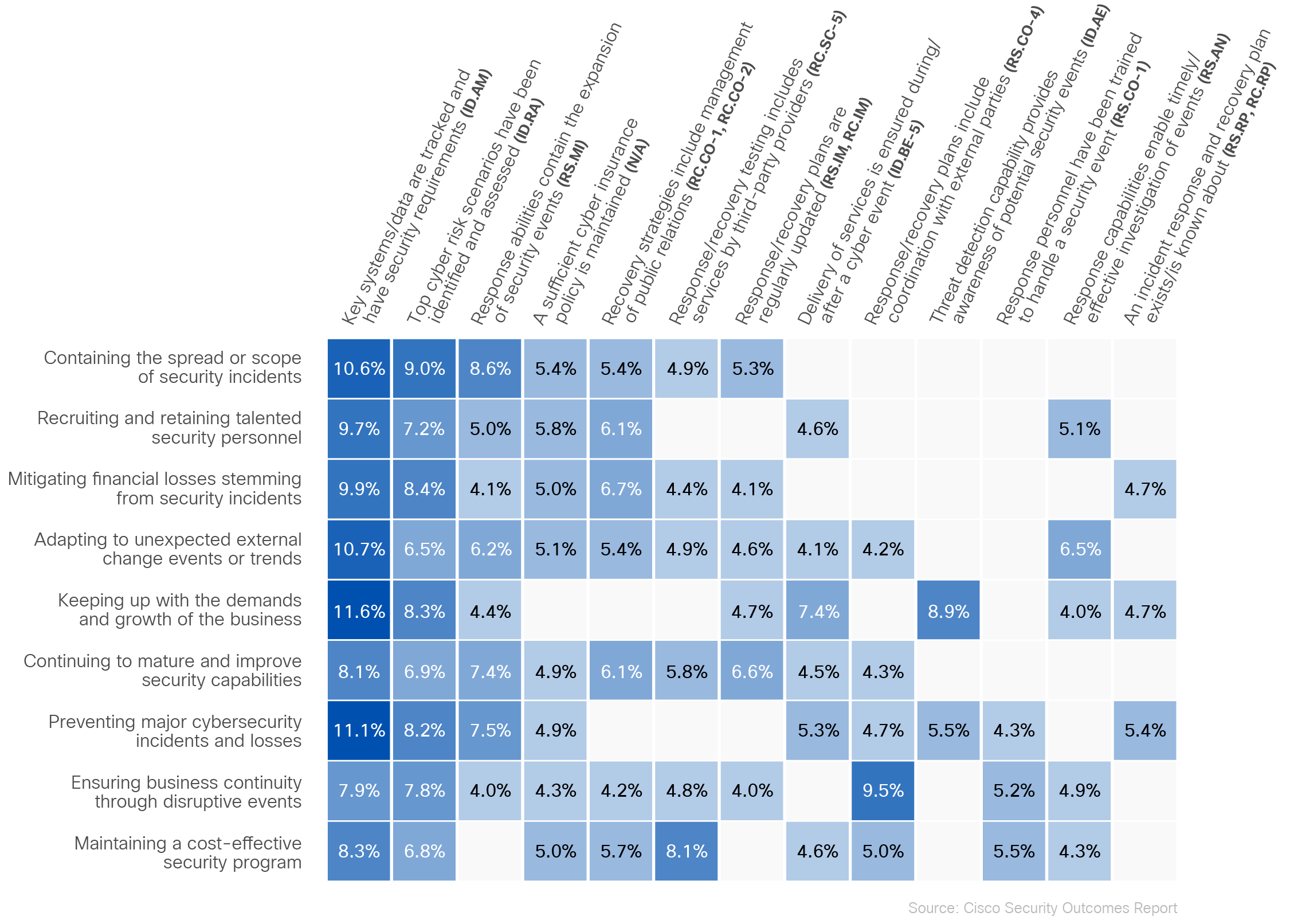
And there’s much more. The report identifies—and then explores—seven success factors that, if achieved, boost our measure of overall security resilience from the bottom 10th percentile to the top 10th percentile. These include establishing a security culture and properly resourcing response teams, among others.
I hope this introductory blog—the first in a series exploring this latest report—whets your appetite to read the report itself. And remember, we are always aiming to reveal the next undiscovered insight that leads to better security outcomes. Please share your feedback and research requests with us in the comments below, or talk to us at the next security conference.
For more insights like what you’ve seen in today’s blog take a look at the Security Outcomes Report, Volume 3: Achieving Security Resilience.
Explore more data-backed cybersecurity research and other blogs on security resilience:
We’d love to hear what you think. Ask a Question, Comment Below, and Stay Connected with Cisco Secure on social!
Cisco Secure Social Channels





A recent scoop by Reuters revealed that mobile apps for the U.S. Army and the Centers for Disease Control and Prevention (CDC) were integrating software that sends visitor data to a Russian company called Pushwoosh, which claims to be based in the United States. But that story omitted an important historical detail about Pushwoosh: In 2013, one of its developers admitted to authoring the Pincer Trojan, malware designed to surreptitiously intercept and forward text messages from Android mobile devices.
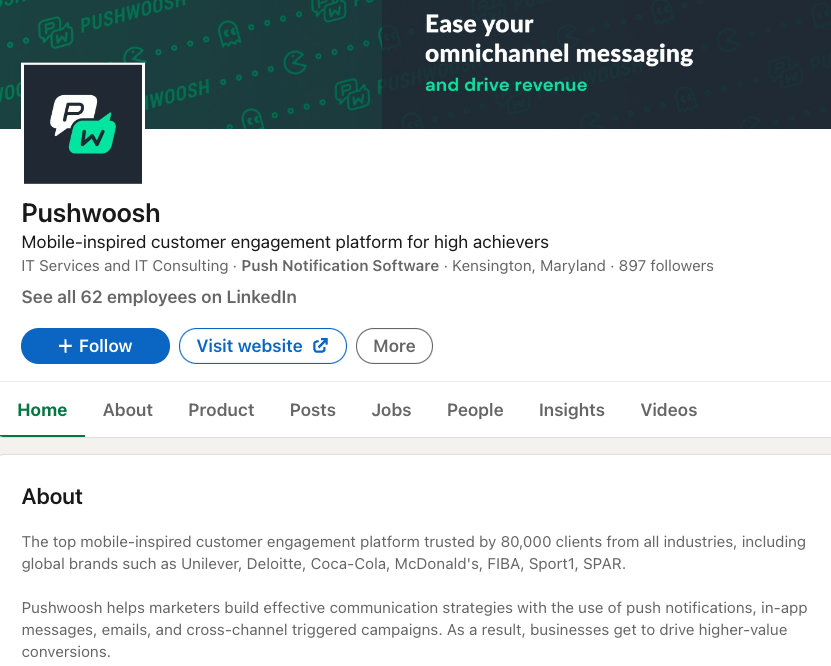
Pushwoosh says it is a U.S. based company that provides code for software developers to profile smartphone app users based on their online activity, allowing them to send tailor-made notifications. But a recent investigation by Reuters raised questions about the company’s real location and truthfulness.
The Army told Reuters it removed an app containing Pushwoosh in March, citing “security concerns.” The Army app was used by soldiers at one of the nation’s main combat training bases.
Reuters said the CDC likewise recently removed Pushwoosh code from its app over security concerns, after reporters informed the agency Pushwoosh was not based in the Washington D.C. area — as the company had represented — but was instead operated from Novosibirsk, Russia.
Pushwoosh’s software also was found in apps for “a wide array of international companies, influential nonprofits and government agencies from global consumer goods company Unilever and the Union of European Football Associations (UEFA) to the politically powerful U.S. gun lobby, the National Rifle Association (NRA), and Britain’s Labour Party.”
The company’s founder Max Konev told Reuters Pushwoosh “has no connection with the Russian government of any kind” and that it stores its data in the United States and Germany.
But Reuters found that while Pushwoosh’s social media and U.S. regulatory filings present it as a U.S. company based variously in California, Maryland and Washington, D.C., the company’s employees are located in Novosibirsk, Russia.
Reuters also learned that the company’s address in California does not exist, and that two LinkedIn accounts for Pushwoosh employees in Washington, D.C. were fake.
“Pushwoosh never mentioned it was Russian-based in eight annual filings in the U.S. state of Delaware, where it is registered, an omission which could violate state law,” Reuters reported.
Pushwoosh admitted the LinkedIn profiles were fake, but said they were created by a marketing firm to drum up business for the company — not misrepresent its location.
Pushwoosh told Reuters it used addresses in the Washington, D.C. area to “receive business correspondence” during the coronavirus pandemic. A review of the Pushwoosh founder’s online presence via Constella Intelligence shows his Pushwoosh email address was tied to a phone number in Washington, D.C. that was also connected to email addresses and account profiles for over a dozen other Pushwoosh employees.
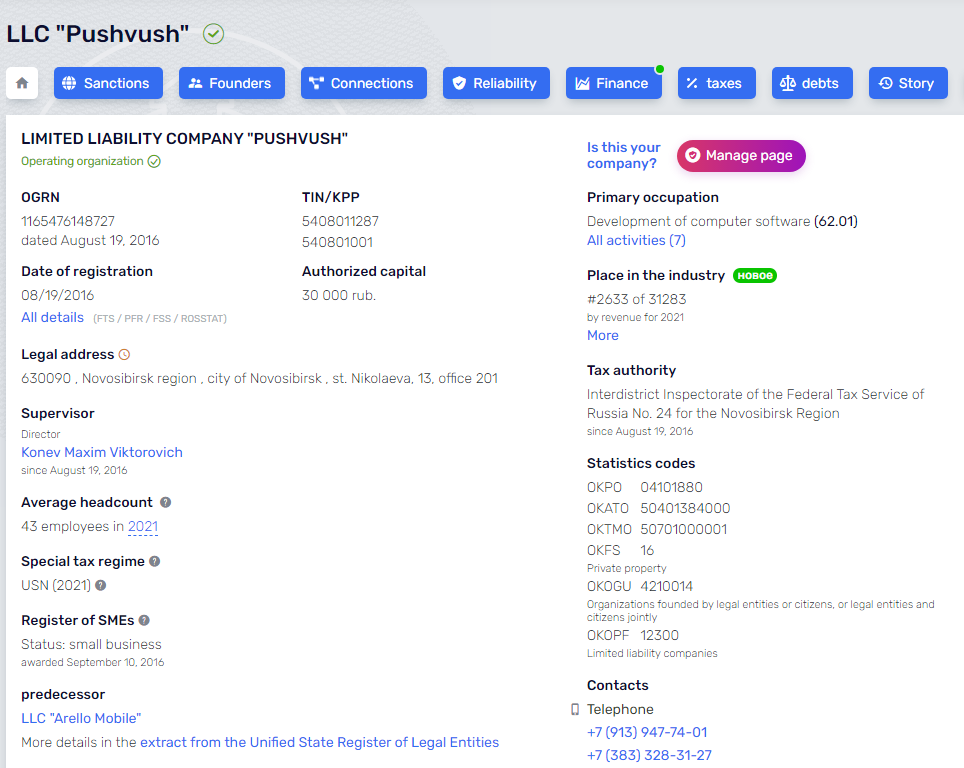
Pushwoosh was incorporated in Novosibirsk, Russia in 2016.
The dust-up over Pushwoosh came in part from data gathered by Zach Edwards, a security researcher who until recently worked for the Internet Safety Labs, a nonprofit organization that funds research into online threats.
Edwards said Pushwoosh began as Arello-Mobile, and for several years the two co-branded — appearing side by side at various technology expos. Around 2016, he said, the two companies both started using the Pushwoosh name.
A search on Pushwoosh’s code base shows that one of the company’s longtime developers is a 41-year-old from Novosibirsk named Yuri Shmakov. In 2013, KrebsOnSecurity interviewed Shmakov for the story, “Who Wrote the Pincer Android Trojan?” wherein Shmakov acknowledged writing the malware as a freelance project.
Shmakov told me that, based on the client’s specifications, he suspected it might ultimately be put to nefarious uses. Even so, he completed the job and signed his work by including his nickname in the app’s code.
“I was working on this app for some months, and I was hoping that it would be really helpful,” Shmakov wrote. “[The] idea of this app is that you can set it up as a spam filter…block some calls and SMS remotely, from a Web service. I hoped that this will be [some kind of] blacklist, with logging about blocked [messages/calls]. But of course, I understood that client [did] not really want this.”
Shmakov did not respond to requests for comment. His LinkedIn profile says he stopped working for Arello Mobile in 2016, and that he currently is employed full-time as the Android team leader at an online betting company.
In a blog post responding to the Reuters story, Pushwoosh said it is a privately held company incorporated under the state laws of Delaware, USA, and that Pushwoosh Inc. was never owned by any company registered in the Russian Federation.
“Pushwoosh Inc. used to outsource development parts of the product to the Russian company in Novosibirsk, mentioned in the article,” the company said. “However, in February 2022, Pushwoosh Inc. terminated the contract.”
However, Edwards noted that dozens of developer subdomains on Pushwoosh’s main domain still point to JSC Avantel, an Internet provider based in Novosibirsk, Russia.
Edwards said the U.S. Army’s app had a custom Pushwoosh configuration that did not appear on any other customer implementation.
“It had an extremely custom setup that existed nowhere else,” Edwards said. “Originally, it was an in-app Web browser, where it integrated a Pushwoosh javascript so that any time a user clicked on links, data went out to Pushwoosh and they could push back whatever they wanted through the in-app browser.”
An Army Times article published the day after the Reuters story ran said at least 1,000 people downloaded the app, which “delivered updates for troops at the National Training Center on Fort Irwin, Calif., a critical waypoint for deploying units to test their battlefield prowess before heading overseas.”
In April 2022, roughly 4,500 Army personnel converged on the National Training Center for a war games exercise on how to use lessons learned from Russia’s war against Ukraine to prepare for future fights against a major adversary such as Russia or China.
Edwards said despite Pushwoosh’s many prevarications, the company’s software doesn’t appear to have done anything untoward to its customers or users.
“Nothing they did has been seen to be malicious,” he said. “Other than completely lying about where they are, where their data is being hosted, and where they have infrastructure.”
Edwards also found Pushwoosh’s technology embedded in nearly two dozen mobile apps that were sold to cities and towns across Illinois as a way to help citizens access general information about their local communities and officials.
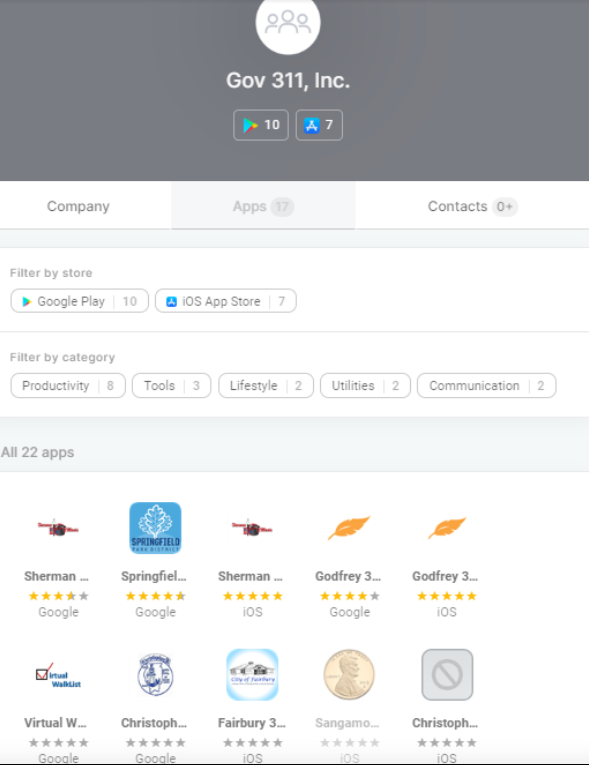 The Illinois apps that bundled Pushwoosh’s technology were produced by a company called Government 311, which is owned by Bill McCarty, the current director of the Springfield Office of Budget and Management. A 2014 story in The State Journal-Register said Gov 311’s pricing was based on population, and that the app would cost around $2,500 per year for a city with approximately 25,000 people.
The Illinois apps that bundled Pushwoosh’s technology were produced by a company called Government 311, which is owned by Bill McCarty, the current director of the Springfield Office of Budget and Management. A 2014 story in The State Journal-Register said Gov 311’s pricing was based on population, and that the app would cost around $2,500 per year for a city with approximately 25,000 people.
McCarty told KrebsOnSecurity that his company stopped using Pushwoosh “years ago,” and that it now relies on its own technology to provide push notifications through its 311 apps.
But Edwards found some of the 311 apps still try to phone home to Pushwoosh, such as the 311 app for Riverton, Ill.
“Riverton ceased being a client several years ago, which [is] probably why their app was never updated to change out Pushwoosh,” McCarty explained. “We are in the process of updating all client apps and a website refresh. As part of that, old unused apps like Riverton 311 will be deleted.”
Edwards said it’s far from clear how many other state and local government apps and Web sites rely on technology that sends user data to U.S. adversaries overseas. In July, Congress introduced an amended version of the Intelligence Authorization Act for 2023, which included a new section focusing on data drawn from online ad auctions that could be used to geolocate individuals or gain other information about them.
Business Insider reports that if this section makes it into the final version — which the Senate also has to pass — the Office for the Director of National Intelligence (ODNI) will have 60 days after the Act becomes law to produce a risk assessment. The assessment will look into “the counterintelligence risks of, and the exposure of intelligence community personnel to, tracking by foreign adversaries through advertising technology data,” the Act states.
Edwards says he’s hoping those changes pass, because what he found with Pushwoosh is likely just a drop in a bucket.
“I’m hoping that Congress acts on that,” he said. “If they were to put a requirement that there’s an annual audit of risks from foreign ad tech, that would at least force people to identify and document those connections.”

It’s important to know that not all websites are safe to visit. In fact, some sites may contain malicious software (malware) that can harm your computer or steal your personal contact information or credit card numbers.
Phishing is another common type of web-based attack where scammers try to trick you into giving them your personal information, and you can be susceptible to this if you visit a suspicious site.
Identity theft is a serious problem, so it’s important to protect yourself when browsing the web. Online security threats can be a big issue for internet users, especially when visiting new websites or following site links.
So how can you tell if you’re visiting a safe website or an unsafe website? You can use a few different methods. This page discusses key things to look for in a website so you can stay safe online.
When you’re visiting a website, a few key indicators can help determine whether the site is safe. This section explores how to check the URL for two specific signs of a secure website.
“Https” in a website URL indicates that the website is safe to visit. The “s” stands for “secure,” and it means that the website uses SSL (Secure Sockets Layer) encryption to protect your information. A verified SSL certificate tells your browser that the website is secure. This is especially important when shopping online or entering personal information into a website.
When you see “https” in a URL, the site is using a protocol that encrypts information before it’s sent from your computer to the website’s server. This helps prevent anyone from intercepting and reading your sensitive information as it’s transmitted.
The padlock icon near your browser’s URL field is another indicator that a webpage is safe to visit. This icon usually appears in the address bar and means the site uses SSL encryption. Security tools and icon and warning appearances depend on the web browser.
Let’s explore the cybersecurity tools on the three major web browsers:
Overall, the ”https” and the locked padlock icon are good signs that your personal data will be safe when you enter it on a website. But you can ensure a website’s security is up to par in other ways. This section will explore five in-depth methods for checking website safety.
McAfee WebAdvisor is a free toolbar that helps keep you safe online. It works with your existing antivirus software to provide an extra layer of protection against online threats. WebAdvisor also blocks unsafe websites and lets you know if a site is known for phishing or other malicious activity. In addition, it can help you avoid online scams and prevent you from accidentally downloading malware. Overall, McAfee WebAdvisor is a useful tool that can help you stay safe while browsing the web.
When you’re browsing the web, it’s important to be able to trust the websites you’re visiting. One way to determine if a website is trustworthy is to look for trust seals. Trust seals are logos or badges that indicate a website is safe and secure. They usually appear on the homepage or checkout page of a website.
There are many types of trust seals, but some of the most common include the Better Business Bureau (BBB) seal, VeriSign secure seal, and the McAfee secure seal. These seals indicate that a third-party organization has verified the website as safe and secure.
While trust seals can help determine whether a website is trustworthy, it’s important to remember that they are not foolproof. Website owners can create a fake trust seal, so it’s always important to do your own research to ensure a website is safe before entering personal information.
Another way to determine if a website is safe to visit is to check for a privacy policy. A privacy policy is a document that outlines how a website collects and uses personal information. It should also state how the site protects your data from being accessed or shared by scammers, hackers, or other unauthorized individuals.
If a website doesn’t have a privacy policy, that’s a red flag that you shouldn’t enter any personal information on the site. Even if a website does have a privacy policy, it’s important to read it carefully so you understand how the site uses your personal data.
It’s important to do some preliminary research before visiting a new website, especially if you’re shopping online or entering personal data like your address, credit card, or phone number. One way to determine if a website is safe and trustworthy is to check third-party reviews. Several websites provide reviews of other websites, so you should be able to find several reviews for any given site.
Trustpilot is one example of a website that provides reviews of other websites.
Look for common themes when reading reviews. If most of the reviews mention that a website is safe and easy to use, it’s likely that the site is indeed safe to visit. However, if a lot of negative reviews mention problems with viruses or malware, you might want to avoid the site.
You can also analyze the website design when deciding whether a website is safe to visit. Look for spelling errors, grammatical mistakes, and anything that appears off. If a website looks like it was made in a hurry or doesn’t seem to be well-designed, that’s usually a red flag that the site might not be safe.
Be especially careful of websites that have a lot of pop-ups. These sites are often spammy or contain malware. Don’t download anything from a website unless you’re absolutely sure it’s safe. These malicious websites rarely show up on the top of search engine results, so consider using a search engine to find what you’re looking for rather than a link that redirects you to an unknown website.
If you’re unsure whether a website is safe to visit, download McAfee WebAdvisor for free. McAfee WebAdvisor is a program that helps protect you from online threats, such as malware and viruses. It also blocks pop-ups and other intrusive ads so you can browse the web without worry. Plus, it’s completely free to download and use.
Download McAfee WebAdvisor now and stay safe while browsing the web.
The post How to Tell Whether a Website Is Safe or Unsafe appeared first on McAfee Blog.

Smishing and vishing are scams where criminals attempt to get users to click a fraudulent link through a phone text message, email, or voicemail. These scams are becoming increasingly popular as cybercriminals try to take advantage of people who are more likely to fall for them, such as those who aren’t as familiar with technology or who may be experiencing a crisis.
Be aware that cybercrime and hacking can happen to anyone. Criminals are always looking for new ways to exploit people, and they know that others may not be cautious or recognize the warning signs of phishing scams when using the internet. That’s why it’s important to be aware of the different types of cybercrime and how to protect yourself.
This article discusses how to protect yourself from smishing attempts and scams where criminals try to get you to click on a fraudulent link or respond to their voicemail message to steal your personal data.
Most people are familiar with phishing scams, where scammers try to trick you into giving them your personal or financial information by pretending to be a legitimate company or organization. But have you ever heard of smishing or vishing?
Smishing is a type of phishing scam where attackers send SMS messages (or text messages) to trick victims into sharing personal information or installing malware on their devices. Vishing is almost identical to smishing, except cybercriminals use VoIP (Voice over IP) to place phone calls to trick victims instead of SMS (short message service) messages.
Smishing messages often appear to be from a legitimate source, such as a well-known company or government agency. It may even include urgent language or threats in an effort to get victims to act quickly. In some cases, the message may also include a link that directs victims to a fake website where they are prompted to enter personal information or download malware.
Here are some examples of smishing text messages hackers use to steal your personal details:
If you fall for a smishing scam, you could end up giving away your personal information or money. Cybercriminals use smishing messages to get personal and financial information, like your credit card number or access to your financial services.
For example, one type of smishing scam is when you get a text message that looks like it’s from your bank. The message might say there’s been suspicious activity on your account and that you need to click on a link to verify your identity. If you do click on the link, you’ll be taken to a fake website where you’ll be asked to enter your banking information. Once the scammers have your login information, they have access to clean out your account.
Smishing scams can be very difficult to spot, but there are some telltale signs to look for and steps to take to protect yourself.
One of the easiest ways to protect yourself from smishing scams is to be able to recognize the signs of a smishing text message. Here are some tips:
While you can’t avoid smishing attacks altogether, you can block spam text messages you receive on your mobile phone. iPhone and Android have cybersecurity tools like spam filters and phone number blocking to help protect you from phishing attacks and malicious links.
To set up spam filters on your iPhone:
To set up spam filters on your Android mobile device:
McAfee Mobile Security is a mobile security app that helps protect your phone from malware, phishing attacks, and other online threats. McAfee Mobile Security is available for Android and iOS cell phones.
One of the benefits of using McAfee Mobile Security is that it can help detect and block smishing attacks. With identity monitoring, McAfee Mobile Security monitors your sensitive information like email accounts, credit card numbers, phone numbers, Social Security numbers, and more to protect against identity theft. They notify you if they find any security breaches.
Other benefits include:
These days, our lives are more intertwined with our mobile devices than ever. We use them to stay connected with our loved ones on social media, conduct our business, and even access our most personal, sensitive data. It’s no surprise that mobile cybersecurity is becoming increasingly important.
McAfee Mobile Security is a comprehensive security solution that helps protect your device from viruses, malware, and other online threats. It also offers a variety of other features, like a secure VPN to protect your credit card numbers and other personal data.
Whether you’re browsing your favorite website, keeping up with friends on social media, or shopping online at Amazon, McAfee Mobile Security provides the peace of mind that comes from knowing your mobile device is safe and secure.
So why wait? Don‘t let the smishers win. Get started today with McAfee Mobile Security and rest easy knowing your mobile device and sensitive information are protected.
The post What Is Smishing and Vishing, and How Do You Protect Yourself? appeared first on McAfee Blog.
A 26-year-old Ukrainian man is awaiting extradition from The Netherlands to the United States on charges that he acted as a core developer for Raccoon, a popular “malware-as-a-service” offering that helped paying customers steal passwords and financial data from millions of cybercrime victims. KrebsOnSecurity has learned that the defendant was busted in March 2022, after fleeing mandatory military service in Ukraine in the weeks following the Russian invasion.

Ukrainian national Mark Sokolovsky, seen here in a Porsche Cayenne on Mar. 18 fleeing mandatory military service in Ukraine. This image was taken by Polish border authorities as Sokolovsky’s vehicle entered Germany. Image: KrebsOnSecurity.com.
The U.S. Attorney for the Western District of Texas unsealed an indictment last week that named Ukrainian national Mark Sokolovsky as the core developer for the Raccoon Infostealer business, which was marketed on several Russian-language cybercrime forums beginning in 2019.
Raccoon was essentially a Web-based control panel, where — for $200 a month — customers could get the latest version of the Raccoon Infostealer malware, and interact with infected systems in real time. Security experts say the passwords and other data stolen by Raccoon malware were often resold to groups engaged in deploying ransomware.
Working with investigators in Italy and The Netherlands, U.S. authorities seized a copy of the server used by Raccoon to help customers manage their botnets. According to the U.S. Justice Department, FBI agents have identified more than 50 million unique credentials and forms of identification (email addresses, bank accounts, cryptocurrency addresses, credit card numbers, etc.) stolen with the help of Raccoon.
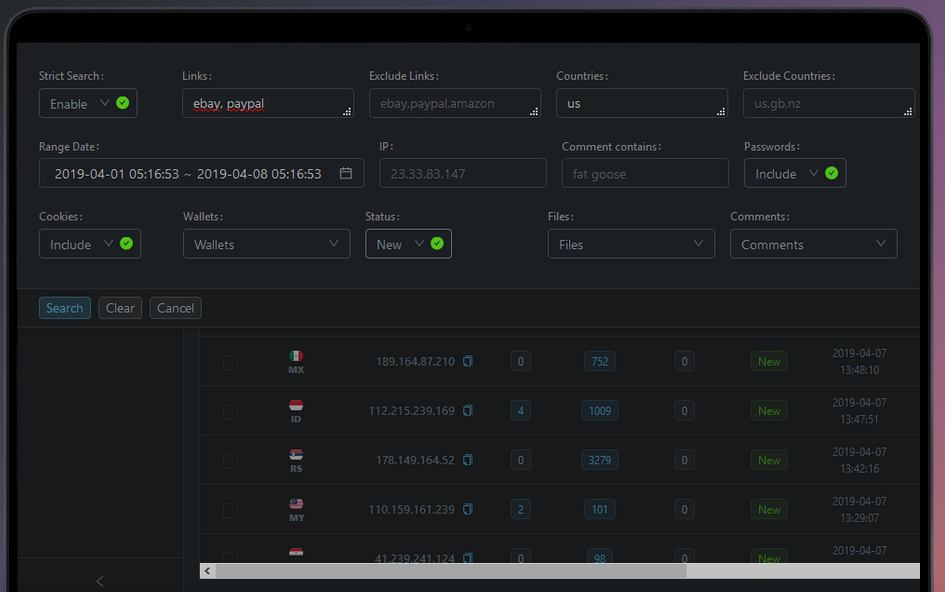
The Raccoon v. 1 web panel, where customers could search by infected IP, and stolen cookies, wallets, domains and passwords.
The unsealed indictment (PDF) doesn’t delve much into how investigators tied Sokolovsky to Raccoon, but two sources close to the investigation shared more information about that process on condition of anonymity because they were not authorized to discuss the case publicly.
According to those sources, U.S. authorities zeroed in on an operational security mistake that the Raccoon developer made early on in his posts to the crime forums, connecting a Gmail account for a cybercrime forum identity used by the Raccoon developer (“Photix”) to an Apple iCloud account belonging to Sokolovsky. For example, the indictment includes a photo that investigators subpoenaed from Sokolovsky’s iCloud account that shows him posing with several stacks of bundled cash.

A selfie pulled from Mark Sokolovsky’s iCloud account. Image: USDOJ.
When Russia invaded Ukraine in late February 2022, Sokolovsky was living in Kharkiv, a city in northeast Ukraine that would soon come under heavy artillery bombardment from Russian forces. Authorities monitoring Sokolovsky’s iCloud account had spent weeks watching him shuttle between Kharkiv and the Ukrainian capital Kyiv, but on Mar. 18, 2022, his phone suddenly showed up in Poland.
Investigators learned from Polish border guards that Sokolovsky had fled Ukraine in a Porsche Cayenne along with a young blond woman, leaving his mother and other family behind. The image at the top of this post was shared with U.S. investigators by Polish border security officials, and it shows Sokolovsky leaving Poland for Germany on Mar. 18.
At the time, all able-bodied men of military age were required to report for service to help repel the Russian invasion, and it would have been illegal for Sokolovsky to leave Ukraine without permission. But both sources said investigators believe Sokolovsky bribed border guards to let them pass.
Authorities soon tracked Sokolovsky’s phone through Germany and eventually to The Netherlands, with his female companion helpfully documenting every step of the trip on her Instagram account. Here is a picture she posted of the two embracing upon their arrival in Amsterdam’s Dam Square:

Authorities in The Netherlands arrested Sokolovsky on Mar. 20, and quickly seized control over the Raccoon Infostealer infrastructure. Meanwhile, on March 25 the accounts that had previously advertised the Raccoon Stealer malware on cybercrime forums announced the service was closing down. The parting message to customers said nothing of an arrest, and instead insinuated that the core members in charge of the malware-as-a-service project had perished in the Russian invasion.
“Unfortunately, due to the ‘special operation,’ we will have to close our Raccoon Stealer project,” the team announced Mar. 25. “Our team members who were responsible for critical components of the product are no longer with us. Thank you for this experience and time, for every day, unfortunately everything, sooner or later, the end of the WORLD comes to everyone.”
Sokolovsky’s extradition to the United States has been granted, but he is appealing that decision. He faces one count of conspiracy to commit computer fraud; one count of conspiracy to commit wire fraud; one count of conspiracy to commit money laundering, and one count of aggravated identity theft.
Sources tell KrebsOnSecurity that Sokolovsky has been consulting with Houston, Tx.-based attorney F. Andino Reynal, the same lawyer who represented Alex Jones in the recent defamation lawsuit against Jones and his conspiracy theory website Infowars. Reynal was responsible for what Jones himself referred to as the “Perry Mason” moment of the trial, wherein the plaintiff’s lawyer revealed that Reynal had inadvertently given them an entire digital copy of Jones’s cell phone. Mr. Reynal did not respond to requests for comment.
If convicted, Sokolovsky faces a maximum penalty of 20 years in prison for the wire fraud and money laundering offenses, five years for the conspiracy to commit computer fraud charge, and a mandatory consecutive two-year term for the aggravated identity theft offense.
The Justice Department has set up a website — raccoon.ic3.gov — that allows visitors to check whether their email address shows up in the data collected by the Raccoon Stealer service.
